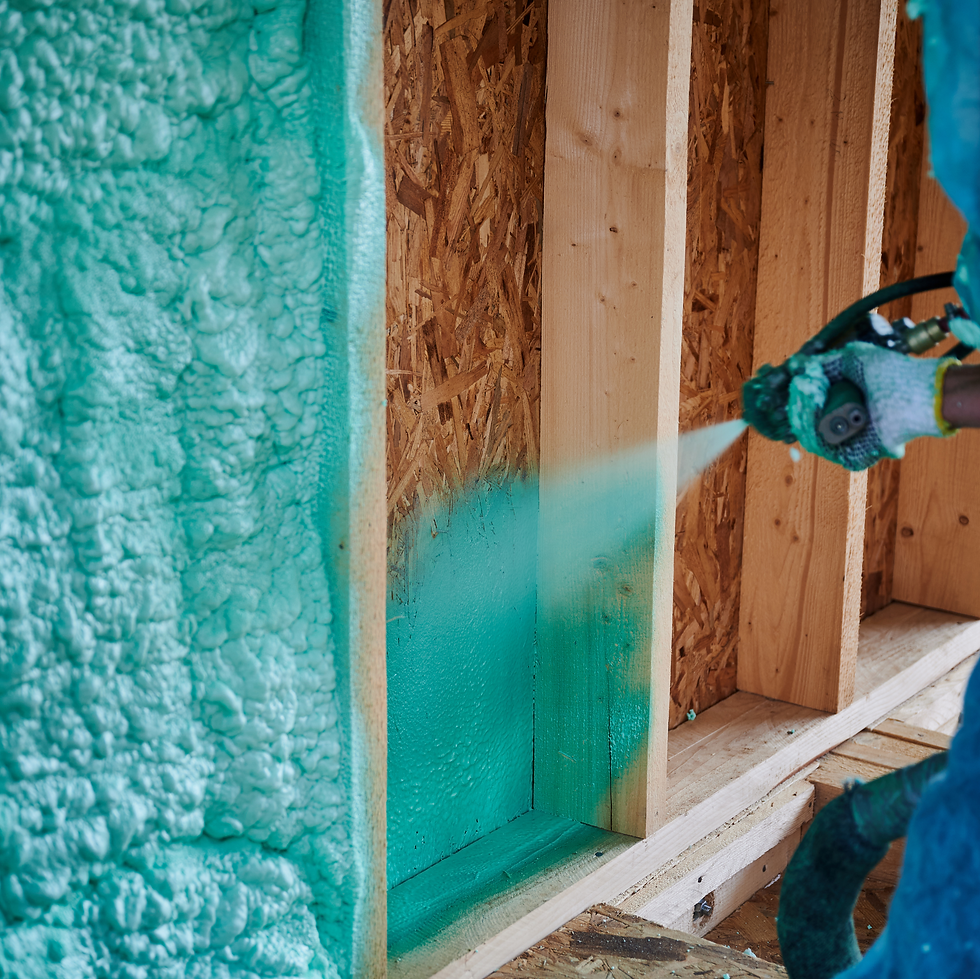A Healthier Home for Little Ones: How Spray Foam Insulation Creates a Child-Safe Environment
- Innovative Insulation

- May 31
- 4 min read

Table of Contents
Why Insulation Choices Matter for Kids
Cleaner Indoor Air for Sensitive Lungs
Reduced Allergens and Pollutants in the Home
Preventing Mold, Mildew & Moisture-Related Risks
Sound Insulation for Better Sleep and Focus
Long-Term Comfort and Temperature Regulation
Spray Foam vs. Traditional Insulation: What's Best for Families?
Protecting What Matters Most
Why Insulation Choices Matter for Kids
When you're raising little ones, their health, comfort, and safety are always at the forefront. From baby-proofing sharp corners to choosing non-toxic soaps, every small decision plays a role in creating a safe space. But there's one part of the home that often goes unnoticed — the insulation. What’s behind your walls has a much bigger impact on your children’s well-being than you might think. Spray foam insulation is emerging as a favorite for families because it’s clean, safe, and incredibly effective. It helps maintain air quality, prevents allergens, controls temperature, and contributes to a healthier overall environment, the kind of space every child deserves to grow up in.
Cleaner Indoor Air for Sensitive Lungs
Kids breathe more air relative to their body weight than adults, which means the quality of that air matters a lot. Homes that aren't sealed properly can let in pollutants like pollen, dust, car exhaust, and even pesticide particles from outside. These invisible intruders can aggravate asthma or cause chronic respiratory issues. Spray foam insulation forms a tight seal in your walls, ceilings, and floors, which keeps outside air where it belongs, out. This significantly reduces exposure to airborne irritants, helping children breathe easier. For parents with kids who suffer from asthma or allergies, this can bring huge relief and fewer visits to the doctor.
Reduced Allergens and Pollutants in the Home
Beyond outdoor air, indoor pollutants and allergens can also be a problem. Dust mites, pet dander, mold spores, and even pest droppings can build up in homes with poor insulation. Traditional materials like fiberglass can break down and allow these particles to move freely through your living spaces. Spray foam insulation helps solve this by creating a solid, sealed barrier. It reduces the movement of allergens and keeps your indoor air cleaner — something that’s especially beneficial for children with sensitivities. Less sneezing, fewer itchy eyes, and more comfortable playtime all year long.
Preventing Mold, Mildew & Moisture-Related Risks
Moisture is another hidden risk in many homes, and where there’s moisture, mold isn’t far behind. Mold and mildew love to grow in damp basements, attics, and crawlspaces, and exposure to them can trigger skin irritation, respiratory problems, or long-term sensitivities in children. Spray foam, especially the closed-cell variety, is moisture-resistant. It helps prevent water and humid air from sneaking into the places where mold usually takes hold. By creating a drier, safer environment, spray foam reduces the risk of mold-related health issues and helps protect your home's structural integrity as well.
Sound Insulation for Better Sleep and Focus
Noise might not seem like a health hazard, but any parent who’s tried to get a toddler to nap during a lawn-mowing session outside knows how disruptive it can be. Kids need quiet to rest, learn, and feel calm. Spray foam insulation (particularly open-cell spray foam) also acts as a sound barrier. It reduces outside noise like traffic, loud neighbors, or barking dogs, creating a more peaceful indoor environment. That means better naps, deeper sleep, and fewer distractions during homework time. It’s a simple change that can make a big impact on a child’s daily routine.
Long-Term Comfort and Temperature Regulation
Children are more sensitive to temperature changes than adults. A nursery that’s too cold or a playroom that turns into a sauna during summer can be uncomfortable at best and unhealthy at worst. Spray foam insulation keeps temperatures steady by sealing air leaks and reducing heat loss in winter or heat gain in summer. This creates a consistent indoor climate where your kids can feel comfortable, no matter the weather outside. You’ll also notice fewer colds caused by drafts and less sweating during hot months. Plus, your HVAC system won’t have to work as hard, which means energy savings for your household, too.
Spray Foam vs. Traditional Insulation: What's Best for Families?
Let’s take a quick look at how spray foam stacks up against more traditional options. Fiberglass insulation is commonly used, but it can irritate the skin and lungs, and it's not great for curious little hands or crawling toddlers. Over time, fiberglass can also break down and become less effective. Cellulose, while eco-friendly, is often treated with chemicals and can absorb moisture, leading to mold problems. In contrast, spray foam is hypoallergenic, durable, and moisture-resistant. It doesn’t break down or release harmful particles, and it seals every crack and crevice to give your home lasting protection. For families, this makes spray foam a smart and safe choice both now and in the long run.
Protecting What Matters Most
At the end of the day, your home should be a place where your kids can breathe easily, sleep soundly, and play freely. Spray foam insulation helps make that possible. From improving air quality and cutting down on allergens to preventing mold and maintaining a comfortable indoor temperature, it’s one of the best investments you can make for your family’s health and well-being. It doesn’t just insulate — it protects. If you're ready to create a cleaner, safer, more comfortable home for your little ones, spray foam could be exactly what you’re looking for.
Call Innovative Insulation at (845) 319-9169 or visit our website to schedule your free consultation.








Comments